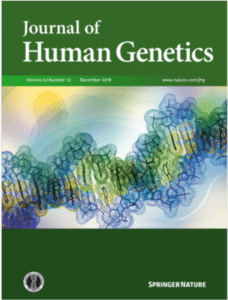 Scientists in Japan report using the unique properties of SMRT Sequencing to detect a structural variant (SV) responsible for a hereditary form of epilepsy. The 4.6 kb intronic repeat insertion was found from low-coverage whole genome sequence data, leading the team to suggest that this approach could be useful for determining the genetic mechanisms behind many unexplained diseases.
Scientists in Japan report using the unique properties of SMRT Sequencing to detect a structural variant (SV) responsible for a hereditary form of epilepsy. The 4.6 kb intronic repeat insertion was found from low-coverage whole genome sequence data, leading the team to suggest that this approach could be useful for determining the genetic mechanisms behind many unexplained diseases.
“Detecting a long insertion variant in SAMD12 by SMRT sequencing: implications of long-read whole-genome sequencing for repeat expansion diseases” comes from lead author Takeshi Mizuguchi, senior author Satoko Miyatake, and collaborators at Yokohama City University and the University of Occupational and Environmental Health School of Medicine. The Journal of Human Genetics paper describes how the scientists turned to long-read SMRT Sequencing after finding that short-read platforms were not well-suited to detecting large, challenging SVs. “Many patients with conditions for which the genetic cause is unknown are still encountered, suggesting that certain types of pathogenic variation evade detection by the currently available short-read technology,” the authors note. Because long-read sequencing can now routinely produce reads of 10 kb or more, they add, this technology “may pave the way for the detection of unprecedented SVs as well as repeat expansions.”
For this project, scientists worked with a Japanese family affected by benign adult familial myoclonus epilepsy, or BAFME, which generally manifests in adulthood. Previous studies had used linkage analysis to identify four loci in the family associated with the disease. The team used whole genome SMRT Sequencing to analyze one affected family member as well as three healthy controls.
Using pbsv, they identified 9,138 insertions and 6,498 deletions in the affected individual, of which 2,420 insertions and 1,086 deletions were not seen in the unaffected family members. That included six SVs in the linked SAMD12 region of interest, with a 4,661 bp insertion identified as mostly likely pathogenic. “The insertion was a novel sequence, rather than a tandem duplication,” the scientists report. “A total of 95.41% was found to be a low-complexity sequence.”
The team suggests that this approach could provide an unbiased means of detecting pathogenic SVs. “These results indicate that long-read WGS is potentially useful for evaluating all of the known SVs in a genome and identifying new disease-causing SVs in combination with other genetic methods to resolve the genetic causes of currently unexplained diseases,” they report.
January 9, 2019 | Human genetics research